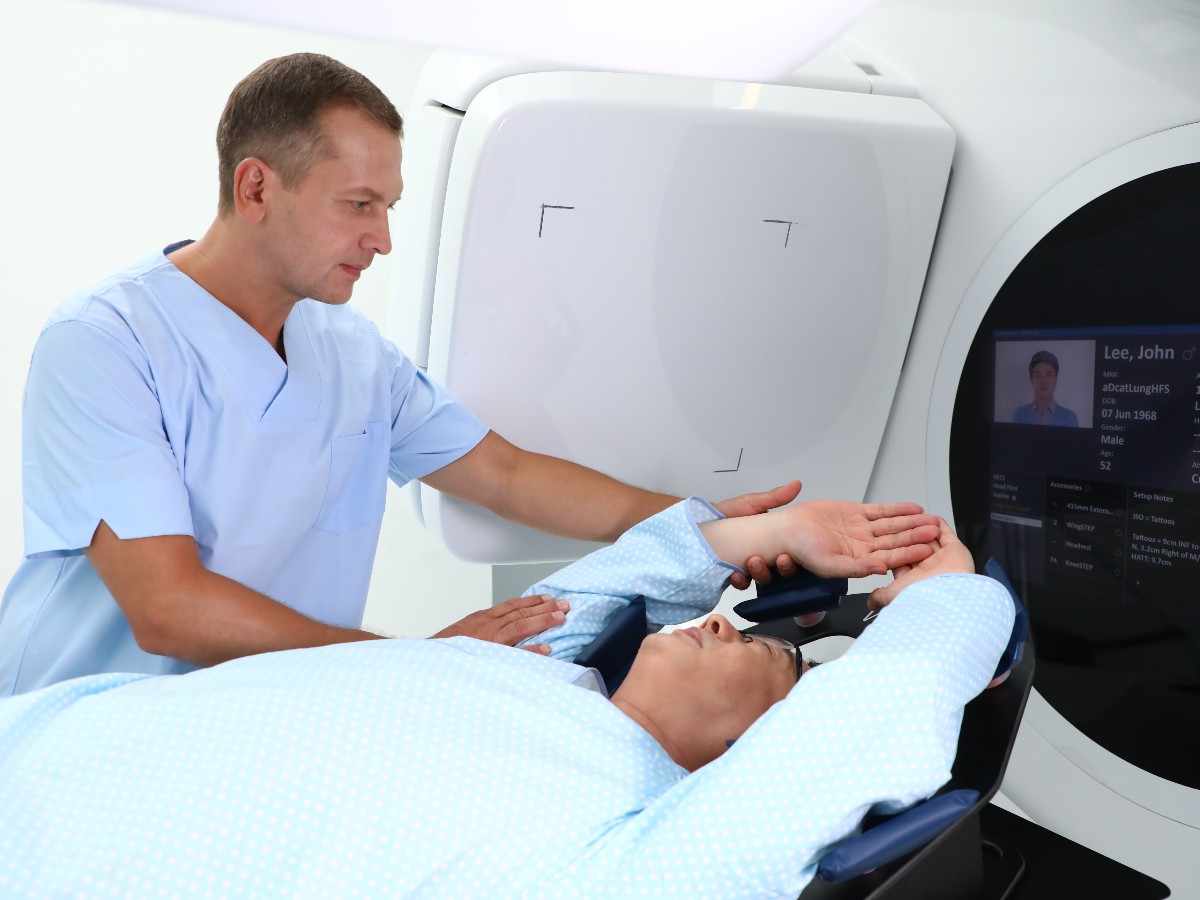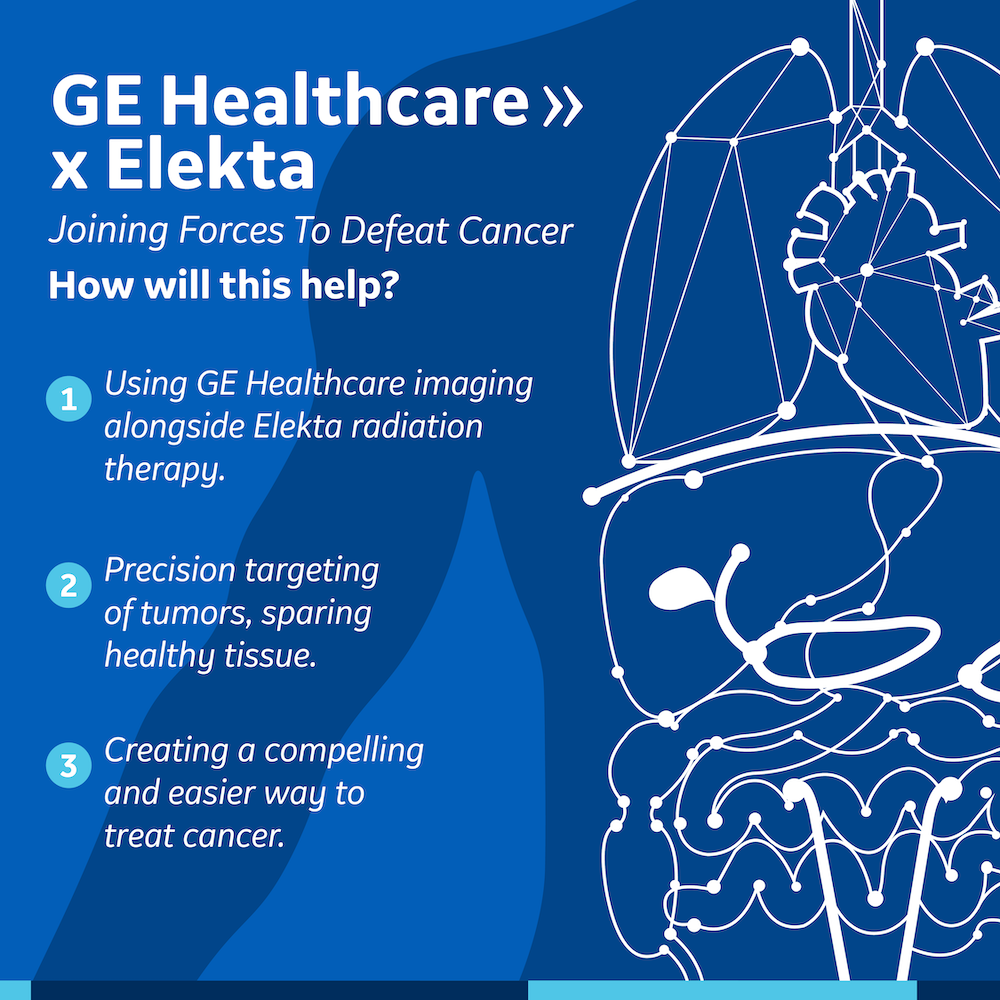In order to successfully diagnose and treat cancer, providers need an array of equipment and software solutions at their disposal, including medical diagnostic scanners, radiation treatment machines, treatment planning software, oncology informatics solutions and more. But too many hospitals around the world don’t own or lease these devices. In fact, although half of cancer patients worldwide require radiation during treatment,[1] people in emerging nations typically have less access to this type of precision therapy.
“In the U.S. and Europe, there are 13 treatment-delivery machines per million people,[2] whereas in many regions there are one to two treatment-delivery machines per million,” says Sampath Kandala, general manager for the Precision Therapy segment within GE Healthcare. “Most of the patients that would need cancer radiation therapy treatment are in countries such as China and India, and in Asia more broadly.”[3]
A new collaboration between GE Healthcare and Elekta — a leader in radiation therapy — may help healthcare providers give cancer patients in these countries greater access to the radiation oncology treatments they need.
In April, the two companies announced a global agreement that will allow them to offer hospitals in any country oncology solutions that feature both companies’ tools and equipment. This would include GE Healthcare’s radiation oncology solutions — CT scanners (known as ”simulators” when being used for radiation therapy procedures), PET simulators, MRI simulators and ultrasound imaging technology — which providers use to pinpoint tumors, noting their size, characteristics and location in relation to healthy tissue so that Elekta’s radiotherapy treatments can be applied to the right targets in individual patients. These are primarily found in the breast, prostate, lung or brain.
The GE Healthcare-Elekta collaboration may also allow healthcare providers to suggest treatments to cancer patients in emerging markets, who might not otherwise be able to access them. For example, a typical patient’s cancer treatment plan may be based solely on the initial MR or CT scan images, but providers may be able to administer a more flexible adaptive therapy to patients, an approach during which the treatment plan evolves with the patient throughout the course of radiation therapy, which may result in better patient outcomes.
“The patient profile may change during the two-month process,” Kandala says. “They might lose weight, or during the treatment itself the tumor moves. The provider may adapt the treatment plan based on their patient’s body conditions.”
Having access to an imaging system like GE’s for simulation and guidance is crucial for adaptive therapy, so that the radiation beam can precisely target the exact location for each treatment session.
Elekta Versa HD is an advanced radiotherapy platform designed to facilitate advanced radiation therapy procedures such as stereotactic body radiation therapy (SBRT) and stereotactic radiosurgery (SRS). These treatment modalities demand superior precision and accuracy in delivering radiation to the tumor while sparing the surrounding tissues and organs.
“They need their treatment-delivery machines to have advanced abilities to navigate the radiation beam very precisely to the tumor,” Kandala says. “The first step for this process is a very good image. That comes from the GE scanner. If you look at the radiation therapy workflow, the starting point is imaging, and then everything happens after that.”
Expanding each company’s reach
Hospitals seeking oncology equipment in different parts of the world may have existing resources for one type of technology but not everything that they need.
“In some areas, including the Middle East and Africa, Elekta has more presence than GE, and in others, notably in Asia, GE has more presence,” Kandala says. “So now, with this collaboration, each company is able to strengthen their offering to healthcare systems, ultimately benefiting healthcare providers treating cancer patients in each of these regions. ”
In the past, some hospitals may have struggled to purchase complementary, interoperable imaging and treatment equipment, because they had to go through different providers. “Now they have the ability to talk to GE and Elekta, because we jointly will have presence in those remote regions, [offering] access to the technologies,” Kandala says.
Whether in developing countries, emerging nations or even rural segments of the U.S. where hospitals need updated equipment or new facilities are being created, decision-makers can benefit from the GE Healthcare-Elekta collaboration.
“The process itself can be quite cumbersome, to see which vendor has the solutions to support the entire workflow,” Kandala says.
“Ultimately, our hope is that through this collaboration and by allowing healthcare providers to increase access to lifesaving radiation therapy treatments, more patients will be able to get the right, high-quality treatment, which may lead to better outcomes and more lives saved,” adds Kandala.
REFERENCES
[1] David A. Jaffray and Mary K. Gospodarowicz, “Radiation Therapy for Cancer,” in Cancer: Disease Control Priorities, 3rd ed., vol. 3, chap. 14, https://www.ncbi.nlm.nih.gov/books/NBK343621/.
[2] Rifat Atun et al., “Expanding Global Access to Radiotherapy,” The Lancet Oncology 16, no. 10 (September 1, 2015): 1153-1186.
[3] Rengaswamy Sankaranarayanan et al., “Managing the Changing Burden of Cancer in Asia,” BMC Medicine 12, no. 3 (2014), https://www.ncbi.nlm.nih.gov/pmc/articles/PMC4029284/.


